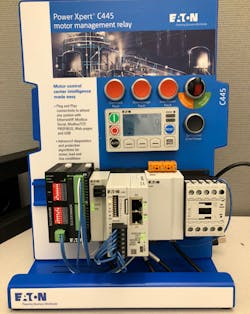Q&A: Using ground fault pulse detection to identify a failing motor
Talk a little bit about technology that focuses on ground fault detection using pulse detection.
Ground fault pulse detection has been used for a number of years in various industries. If a motor shorts to ground it is called a ground fault. The pulser, installed on the power system, can then be energized putting a current pulse on the power feed. The technician in the plant would then go to each motor until the offending motor is identified. This is a slow and laborious task. Eaton designed the Power Xpert C445 measurement module with a means of detecting this pulse, i.e. identifying the offending motor. This allows a signal to be sent to the monitoring system from the Power Xpert C445 Motor Management Relay, via communication network. The operator can then identify the location of the offending motor and send the repair information to maintenance. Maintenance can determine which motor is installed at that location and take the replacement motor or parts to the maintenance location.
How can the technology benefit water applications?
In many water applications uptime or operating time is critical. The pulse detection allows the system to locate the fault and send the appropriate information to the operator/maintenance personnel. This minimizes repair time.
Courtesy of Eaton
How is this technology helping to maximize energy efficiency and avoid downtime?
The C445 Motor Management Relay has built in user logic. This allows the user to program the C445 to monitor devices or I/O attached to the system. The C445 can then send trending data to the system controller. Using this data, motor or system trending can be used on a dash board for the operator. Maintenance action can then be scheduled to correct a potential fault before it occurs. This same data can be used to identify system or parts of system that are trending upward in power consumption. In both cases, sounding an alarm or signaling the operator is a key part of this process.
What are some of the key challenges?
One of the biggest challenges is to determine how the data that is collected will be analyzed. The analysis has to be done via a program that would look for trends in the data (power consumption, temperature of the system, load data). Since these systems typically should be very reliable, failures do not occur frequently, making it difficult to train personnel on trend identification. The other issue has to do with the operator’s time. They are hired to operate the plant, and if they are monitoring system health, that time detracts the operator from doing other functions.


